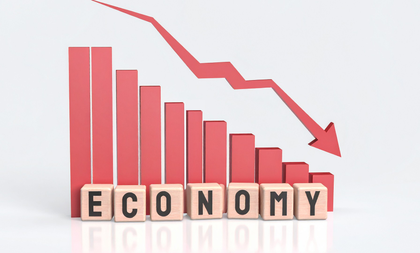Pakistan’s public debt reaches ‘unsustainable’ $286 billion by FY25
By IANS | Updated: October 25, 2025 17:30 IST2025-10-25T17:28:42+5:302025-10-25T17:30:19+5:30
New Delhi, Oct 25 Pakistan's total public debt hit $286 billion by the end of the 2024–25 fiscal ...

Pakistan’s public debt reaches ‘unsustainable’ $286 billion by FY25
New Delhi, Oct 25 Pakistan's total public debt hit $286 billion by the end of the 2024–25 fiscal year, and its borrowing has reached an "unsustainable" level, a new report has said.
The figure, up 13 per cent from the previous year, underscores not only a fragile recovery but also the deep structural flaws that have become the hallmark of Pakistan’s fiscal management, according to the report from Maldives Insight.
"Pakistan’s economy is not expanding fast enough to outpace its liabilities, and its borrowing remains both habitual and unsustainable," the report said, adding that servicing debt, rather than financing growth, remains the single largest use of public resources.
Pakistan's Ministry of Finance’s ‘Annual Debt Review 2025’ concedes that the debt-to-GDP ratio has climbed to 70 per cent, up from 68 per cent the previous year.
Pakistan’s fiscal deficit for the year stood at $25.2 billion, financed primarily through domestic borrowing, the report said, adding that domestic debt alone now accounts for $194 billion, up 15 per cent from the previous year.
Meanwhile, the external debt rose to $92.5 billion, up 6 per cent. The ministry reported an average time to maturity for domestic debt of 3.8 years and a reduced external debt share. However, interest expenses increased by 9 per cent year-on-year, limiting development spending, according to the report.
Multilateral loans accounted for 57 per cent of total external debt, bilateral loans constituted 26 per cent, and commercial borrowing, which includes Eurobonds, made up the remainder. The report noted that these numbers demonstrate the extent to which Pakistan's economic sovereignty is dependent on the conditionalities and fluctuations of external financiers.
Pakistan's economy remains incapable of generating sufficient revenue to sustain itself without constant borrowing.
The country’s debt profile may have become more “manageable” on paper, but the underlying economy remains brittle, dependent on external bailouts and domestic credit traps.
Disclaimer: This post has been auto-published from an agency feed without any modifications to the text and has not been reviewed by an editor
Open in app